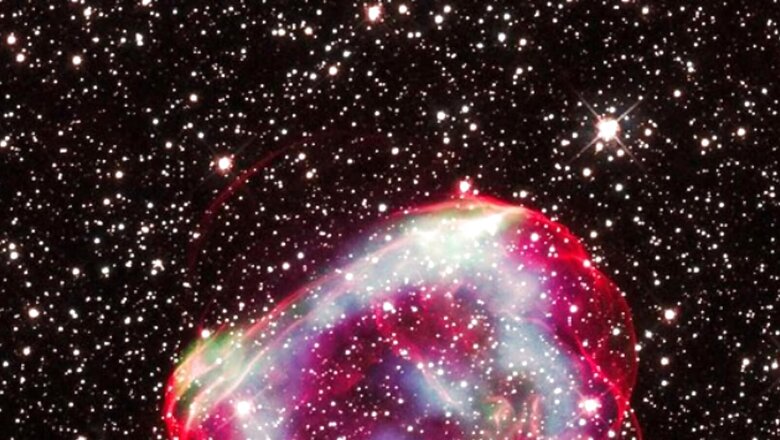
views
The National Aeronautics and Space Administration (NASA) recently shared a picture of cosmic material that is believed to be a remnant from the past and showcases the aftermath of an explosion of a white dwarf star, or a supernova.
Monikered as SNR 0519-69.0, or SNR 0519 for short, the relic is located roughly 1,60,000 light years from our planet Earth. The image was a collaborative effort of NASA’s Chandra X-ray observatory, the Hubble Space Telescope, and NASA’s retired Spitzer Space Telescope. The material is believed to have formed after the dying star underwent a thermonuclear explosion and was destroyed.
Claiming to have “wound back the clock,” the researchers expect to churn out some data related to the explosion that ended the star’s existence in the universe and the surroundings that witnessed the cosmic event. Titling the caption, “Teamwork makes the dream work,” NASA shared the picture of the supernova remnant on their Instagram. The image shows a blob with amazing colours against the backdrop of a dense universe filled with stars and galaxies.
Take a look:
Since being shared, the picture has garnered almost ten lakh likes and triggered some amazing reactions from the netizens. “What a magical capture,” wrote one user in the comment section. Another said, “This is stunning.” One user quoted famous American astronomer Carl Sagan, and wrote, “The nitrogen in our DNA, the calcium in our teeth, the iron in our blood, the carbon in our apple pies were made in the interiors of collapsing stars.”
The team of researchers compared the images taken by Hubble in 2010, 2011, and 2020 to measure the speed of the material in the blast wave. The speed is in the vicinity of 90 lakh kilometres per hour. Scientists believe that if the speed is close to the estimated number, then the light emanating from the material would have reached Earth roughly 670 years ago.
Read all the Latest Buzz News and Breaking News here



















Comments
0 comment